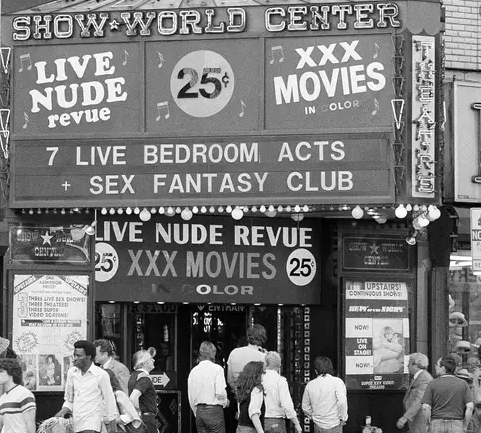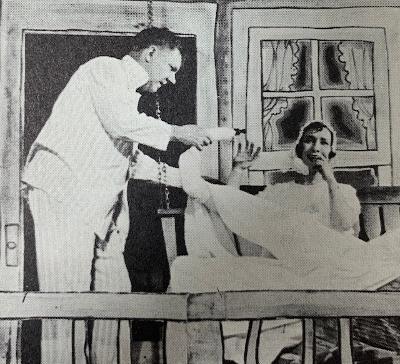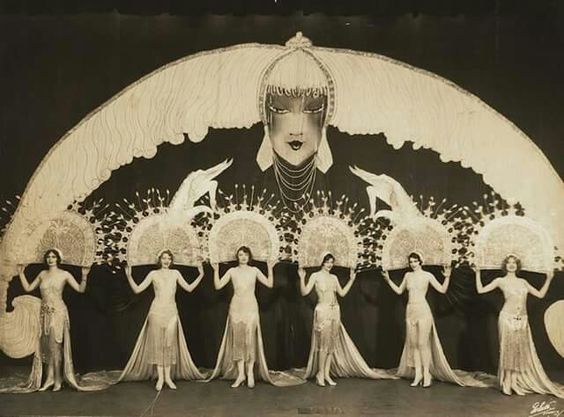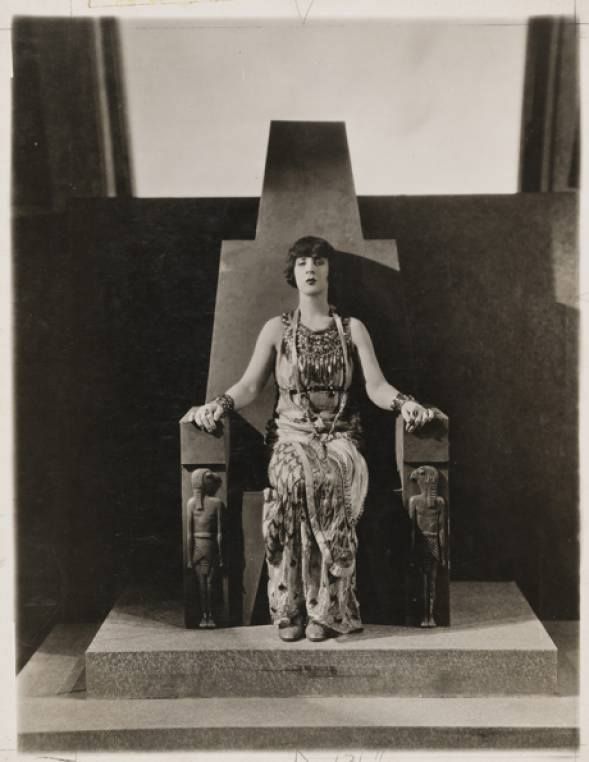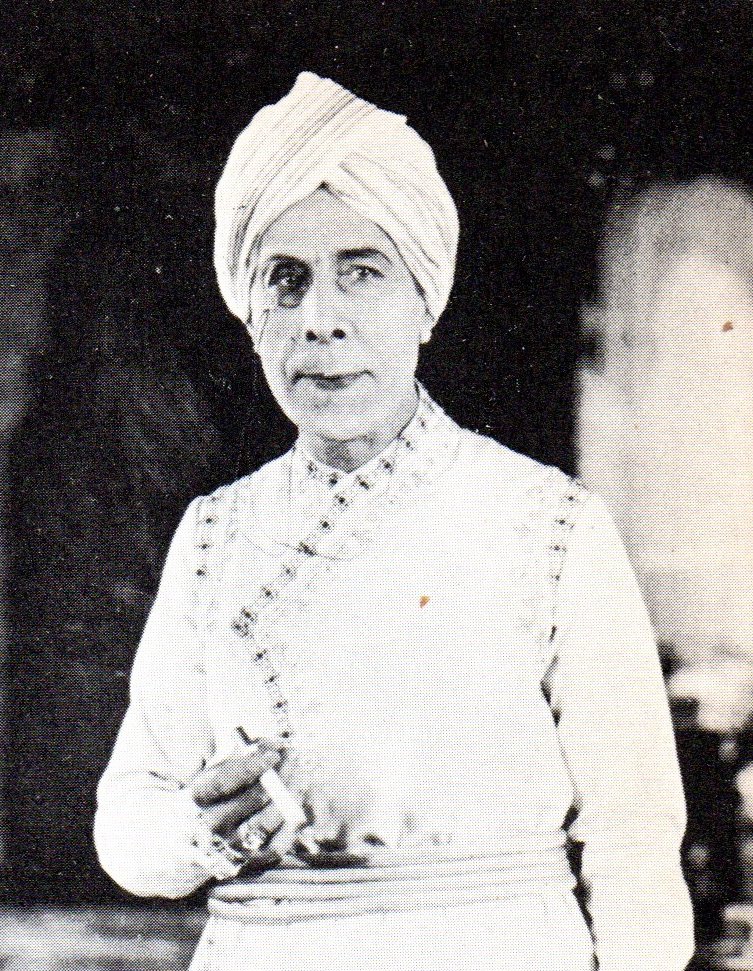
George Arliss – The Green Goddess
By Samuel L. Leiter
Despite the many years gone by, those looking back on the New York theatre of 1920 through 1950 can often be charmed by how fresh much of it still can seem. Of course, the bulk of it remains buried under a carpet of old-fashioned morality, creaky artistry, and outdated social conventions, not least of which was the widespread use of blackface. My new series, Leiter Looks Back, intends to remind readers of some of the more memorable creations we might dub the Twinkling Twenties, the Threatening Thirties, and the Fighting Forties. I invite you to follow along.
How many shows were produced in those years? Statistics vary. For example, for 1920-1921, Burns Mantle’s The Best Plays of 1920-1921 gives 157 shows, from June 1920 through May 1921. Variety puts the number at 152 but my Encyclopedia of the New York Stage, 1920-1930 counts 192! And don’t get me started on 1927-1928, the most prolific Broadway season ever.
My intention in this series—which, hopefully, will dissipate when the coronavirus does—is to provide articles describing, for each June through May season from 1920-1921 on, five new plays, five new musicals, five new revues, and five revivals: thus, 20 shows a year. If this proves too ambitious, rethinking will be in order. It will certainly help keep me out of trouble.
With so many shows to choose from, selecting just five in each category is ridiculously difficult. Unavoidably, then, my criteria will fluctuate. Whatever the reasons for their choice, such as contemporary redolence, some interesting anecdote they’ve inspired, or their historical/literary significance, I hope they’ll prove worthy of revisiting.
Readers should remember that there were few theatre awards in those days. The principal examples were the Pulitzer Prize (the first for a play was for 1917-1918), or selection by Burns Mantle in his The Best Plays of . . . series, the first being for 1919-1920. Selection for one or the other, though, won’t be a criterion for inclusion here.
We begin, then, with five new plays (new to New York, that is) from 1920-21: The Bat, The Green Goddess, The Tavern, Liliom, and Miss Lulu Bett. The first three are here primarily because of their popularity as theatrical attractions; the others have more literary credibility. Wherever possible, I’ve also provided links to their online movie versions, most made within a decade of their theatrical debut. These offer a good notion of their stage lives.
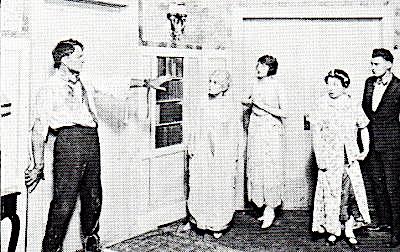

The Bat: Robert Vaughan, Effie Elsler, Anne Morrison, May Vokes, Stuart Sage
The Bat, one of the longest running shows of its day, rang up 878 performances. Written by Mary Roberts Rinehart and Avery Hopwood, and based on Rinehart’s novel, The Circular Staircase, it opened at the Morosco Theatre on August 23, 1920, directed by Colin Kemper. It was considered the best whodunit of the decade. Still, Mantle ignored it. For the 1926 movie (there have been four), click here.
The plot counts a couple of killings, an arson, a bank theft, and several cases of assault and battery among its violent complications. The audience is kept guessing throughout concerning the identity of the mastermind villain, who gives his soubriquet to the title.
Our heroine is Miss Cornelia Van Gorder (Effie Ellsler), a sixtyish spinster, who rents the Long Island country home of a banker reportedly killed out West some few months earlier. However, the banker may not be dead at all. He may have been responsible for a large theft from his firm, the money may be hidden in the house, and he may be attempting to retrieve it. With a plot ingeniously worked out to include a quartet of others also seeking the cash, the play moves to its exciting conclusion, the revelation that the private detective (Harrison Hunter) hired by Miss Van Gorder is the culprit. During all of this, the antics of the maid, played hilariously by May Vokes in the original, provides bursts of comedic relief.
Rinehart’s novel had been so well used, said the Sun and Herald, “that the interest of the audience never flagged for a minute. The Bat moves with breathless rapidity, is occasionally somewhat incoherent, but is always engrossing. . . . The Bat is the best play of the year.”
The Green Goddess was an even more melodramatic crowd-pleaser. It opened on January 18, 1921, at the Booth Theatre, staged by the distinguished Winthrop Ames, who helped it achieve a then substantial 440 performances. The first play by England’s William Archer, famous critic and Ibsen translator, it disproved his own claim that he could not himself write a play.
The Green Goddess gave Britain’s George Arliss a crowning triumph as the villainous Raja of Rukh. Despite Archer’s own battle against meretriciousness, his play had no literary value and was “commercial melodrama of the most conventional kind,” according to Arthur Hornblow. The 1930 movie version, starring Arliss, is here.
Into an inaccessible area of India ruled over by the anti-British Raja of Rukh crash lands a plane bearing Major Crespin (Herbert Waring), his wife (Olive Wyndham), and Dr. Traherne (Cyril Keightley). The Oxford-educated ruler treats the survivors graciously but plans to kill them in return for the planned execution of three of his own politically subversive brothers by the Indian government. When Mrs. Crespin refuses the ruler’s one condition for saving her party, the Brits’ fates are sealed. Luckily, they manage to send out a message via the wireless and are rescued in the nick of time by the British Flying Corps.
Alexander Woollcott declared that Archer had “attempted nothing more—nor less—than a suave and mannerly hair-raiser, and while his play will not touch your heart nor quicken your mind, it is practically certain to have a most agitating effect upon your scalp.” “Mr. George Arliss,” wrote Ludwig Lewisohn, “gave a performance of such pliancy and precision that he seemed to flash and darken like a polished blade in alternate sunshine and shadow.”
There’s a story that Olive Wyndham, who, before she even read the script, dreamed about being held prisoner in a palace by a fantastic-looking jailer. Archer later told Wyndham that a precisely similar dream had inspired the play. Another anecdote comes from Arliss, who said the play had suffered from an exceedingly weak third act, and was saved by the lighting devised by Ames to suggest a mood of “impending catastrophe.” On the day the lights were being changed, Archer thought Ames’s secretary had told him on the phone that her boss was at the theatre “rewriting the third act.” Archer rushed over angrily only to find out that the secretary had said “relighting the third act.”
The story goes that the dry, meticulous Arliss was far from Archer’s own conception of the role. Arliss convinced Archer to revise his dialogue to fit the actor’s unique style. On opening night, the long-faced star delivered a pun-filled speech that began, “This success does not surprise me for when you have a good Archer with good Ames you can’t miss.”
Next up from 1920-1921: The Tavern, Liliom, and Miss Lulu Bett.



